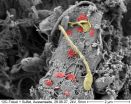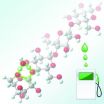NHS consultant contract fails to increase productivity
2012-12-14
(Press-News.org) An employment contract for NHS consultants introduced in 2003 and including a 27 per cent pay rise over three years failed to increase productivity. The findings emerge from a 10-year study of hospital consultant activity, published today by the Journal of the Royal Society of Medicine, which looked at the levels of consultant clinical activity rates between 1999 and 2009. The researchers found that, despite an expectation by the Department of Health that the contract would result in year-on-year productivity gains of 1.5%, consultant activity levels showed a downward trend. There is a heightened need for productivity improvements in the NHS, which has been asked for efficiency gains of £20 billion by 2014/15.
The research, which focused on inpatient activity, is the first attempt to explore the clinical productivity of hospital consultants over time, and to analyse the effect of the consultant contract. Lead author Professor Karen Bloor of the University of York's Department of Health Sciences, said: "Our trends are in general consistent with overall trends in NHS productivity, which have been reported as negative until 2008/9, and then slightly increasing. An increasing trend in patient episodes but a sharper increase in numbers of hospital consultants gives a plausible explanation for the overall decreasing trend in productivity."
Commenting on the consultant contract, Bloor said: "The lack of an effect on NHS inpatient activity of the new contract is perhaps unsurprising given the nature of the contract, which remains a salaried system with supplementary bonuses that reward vaguely defined merit." Co-author Professor Alan Maynard added: "It seems that the tools within the new contract have not been used to increase consultant clinical activity. The contract has not been implemented fully by NHS managers."
The standard contract for a full-time hospital consultant is 10 four-hour sessions per week. Consultants can be paid for 11 or 12 sessions in recognition of working over 40 hours a week. Bloor added: "In principle the reward for extra sessions may have increased the consultant time available to NHS managers, but in practice this may simply have provided extra reward for work that many consultants were already doing."
Bloor concluded: "Claims made that the consultant contract, which resulted in substantial pay increases for hospital specialists in England, would result in increased clinical activity have not materialised. Indeed, in half the specialties studied, a reasonable interpretation of the statistics is that productivity has declined."
###
Notes for authors
Consultant contracts and the effect on clinical activity in the NHS: retrospective analysis of secondary data by Karen Bloor, Nick Freemantle and Alan Maynard will be published online on Friday 14 December 2012 by the Journal of the Royal Society of Medicine. Please make sure you mention the journal in your piece.
The JRSM is the flagship journal of the Royal Society of Medicine and is published by SAGE. It has full editorial independence from the RSM. It has been published continuously since 1809. Its Editor is Dr Kamran Abbasi.
SAGE is a leading international publisher of journals, books, and electronic media for academic, educational, and professional markets. Since 1965, SAGE has helped inform and educate a global community of scholars, practitioners, researchers, and students spanning a wide range of subject areas including business, humanities, social sciences, and science, technology, and medicine. An independent company, SAGE has principal offices in Los Angeles, London, New Delhi, Singapore and Washington DC. www.sagepublications.com
ELSE PRESS RELEASES FROM THIS DATE:
Changes in the gut bacteria protect against stroke
2012-12-14
Researchers at the University of Gothenburg, Sweden, and the Chalmers University of Technology, Sweden, demonstrate that an altered gut microbiota in humans is associated with symptomatic atherosclerosis and stroke. These findings are presented in a study published in Nature Communications on December 4.
The human body contains ten times more bacterial cells than human cells, most of which are found in the gut. These bacteria contain an enormous number of genes in addition to our host genome, and are collectively known as the gut metagenome.
How does the metagenome ...
Pitt Cancer Institute finds new targets for drugs to defeat aggressive brain tumor
2012-12-14
PITTSBURGH, Dec. 13, 2012 – University of Pittsburgh Cancer Institute (UPCI) researchers have identified over 125 genetic components in a chemotherapy-resistant, brain tumor-derived cell line, which could offer new hope for drug treatment to destroy the cancer cells.
The results will be reported in the cover story of December's issue of the journal Molecular Cancer Research, to be published Dec. 18 and currently available online.
The potential drug targets were identified after testing more than 5,000 genes derived from glioblastoma multiforme, an aggressive brain ...
Fertile soil doesn't fall from the sky
2012-12-14
This press release is available in German.
Leipzig. Remains of dead bacteria have far greater meaning for soils than previously assumed. Around 40 per cent of the microbial biomass is converted to organic soil components, write researchers from the Helmholtz Centre for Environmental Research (UFZ), the Technische Universität Dresden (Technical University of Dresden) , the University of Stockholm, the Max-Planck-Institut für Entwicklungsbiologie (Max Planck Institute for Developmental Biology) and the Leibniz-Universität Hannover (Leibniz University Hannover) in the ...
Male bushcrickets are in charge when it comes to sex
2012-12-14
This press release is available in German.
All a question of timing: When bushcrickets mate, the male attaches a sticky package, the so-called spermatophore, to the female's abdomen. Alongside the sperm themselves, this 'bridal present' consists of a protein-rich mass that the female eats after mating. It then takes several hours for the sperm to find their way into the female's reproductive tract. But, who decides when that will happen? A study by the Bielefeld biologists Professor Dr. Klaus Reinhold and Dr. Steven Ramm suggests that it is the male who determines the ...
What mechanism generates our fingers and toes?
2012-12-14
Montréal, December 14, 2012 – Dr. Marie Kmita and her research team at the IRCM contributed to a multidisciplinary research project that identified the mechanism responsible for generating our fingers and toes, and revealed the importance of gene regulation in the transition of fins to limbs during evolution. Their scientific breakthrough is published today in the prestigious scientific journal Science.
By combining genetic studies with mathematical modeling, the scientists provided experimental evidence supporting a theoretical model for pattern formation known as the ...
Study fuels insight into conversion of wood to bio-oil
2012-12-14
New research from North Carolina State University provides molecular-level insights into how cellulose – the most common organic compound on Earth and the main structural component of plant cell walls – breaks down in wood to create "bio-oils" which can be refined into any number of useful products, including liquid transportation fuels to power a car or an airplane.
Using a supercomputer that can perform functions thousands of times faster than a standard desktop computer, NC State chemical and biomolecular engineer Dr. Phillip Westmoreland and doctoral student Vikram ...
Problems with mineral metabolism linked with kidney disease progression
2012-12-14
Highlights
In a study of African Americans with kidney disease, levels of mineral metabolites rose over time; those with faster rates of kidney function decline had the greatest increases in metabolites.
Higher baseline levels of metabolites were linked with an increased risk for kidney failure or death independent of kidney function.
Disordered mineral metabolism is more severe in African Americans with chronic kidney disease, which might partially explain why their disease progresses more rapidly to kidney failure.
Washington, DC (December 13, 2012) — Abnormalities ...
Researchers identify target to help protect kidney patients' heart health
2012-12-14
Highlights
Blocking the receptor for endothelin lowers novel cardiovascular risk factors in patients with chronic kidney disease independent of blood pressure.
The findings suggest that blocking the receptor may provide heart-related benefits to these patients.
60 million people globally have chronic kidney disease.
Washington, DC (December 13, 2012) — Blocking the receptor for proteins that constrict blood vessels reduces markers of heart-related problems in patients with chronic kidney disease (CKD), according to a study appearing in an upcoming issue ...
More bang for bugs
2012-12-14
A new study from the rainforests of Panama provides an unprecedented level of detail regarding the diversity and distribution of arthropod species from the soil to the forest canopy. Yves Basset, scientific coordinator of the CTFS Arthropod Initiative at the Smithsonian Tropical Research Institute, led an international team on Project IBISCA-Panama to sample, sort, catalogue, and finally estimate that a 6,000 hectare forest hosts a total of around 25,000 arthropod species – a figure vastly outnumbering that of better-studied organisms. The study will be published online ...
Psychosocial distress associated with increased stroke risk
2012-12-14
People over age 65 with high psychosocial distress face increased risk of stroke, according to new research in the American Heart Association journal Stroke.
Psychosocial distress is a broad concept that includes depression, stress, a negative outlook and dissatisfaction with life.
In their 10-year study, researchers followed 4,120 people in the Chicago Health and Aging Project for rates of death and stroke incidents. Due to some participants being involved in an HMO only 2,649 participants were analyzed for rates of incident stroke. Participants were 65 years and older ...


